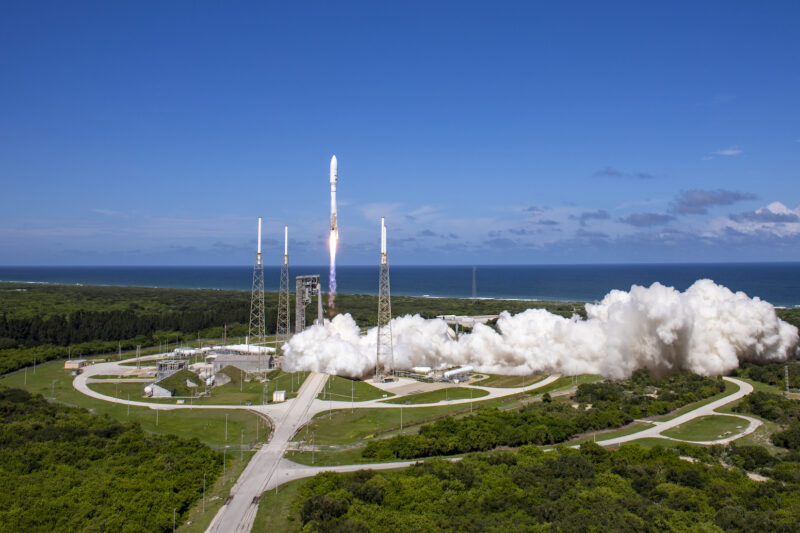Latest News

ULA launches two prototype satellites for Amazon’s Project Kuiper on Oct. 6. Photo: ULA
United Launch Alliance (ULA) launched the first two prototype satellites for Project Kuiper on Friday, putting the first assets in space for Amazon’s Low-Earth Orbit (LEO) constellation.
The Atlas V 501 rocket lifted off at 2:06 p.m. ET on Friday, launching from Space Launch Complex-41 at Cape Canaveral Space Force Station in Florida. The satellites were deployed approximately 18 minutes after liftoff, to 500 km orbits with an inclination of 30 degrees. ULA confirmed mission success post-launch.
These satellites — Kuipersat-1 and Kuipersat-2 — will allow Amazon to test the satellite technology ahead of a full-scale satellite deployment beginning next year. They are the first of more than 3,200 satellites Project Kuiper plans to manufacture and deploy over the next six years.
They will test Amazon’s networking hardware and software and how data will flow through gateway antennas in the Kuiper System and AWS. More specifically, Amazon said it plans to perform end-to-end network tests, sending data back and forth between the internet, ground gateways, the satellites, and customer terminals.
“We’ve done extensive testing here in our lab and have a high degree of confidence in our satellite design, but there’s no substitute for on-orbit testing,” said Rajeev Badyal, Project Kuiper’s vice president of technology. “This is Amazon’s first time putting satellites into space, and we’re going to learn an incredible amount regardless of how the mission unfolds.”
ULA is set to launch many more satellites for Kuiper through a large launch contract which includes nine Atlas V missions and 38 launches on the Vulcan Centaur rocket.
“This initial launch is the first step in support of deployment of Amazon’s initiative to provide fast, affordable broadband service to unserved and underserved communities around the world,” said Gary Wentz, ULA vice president of Government and Commercial programs. “We have worked diligently in partnership with the Project Kuiper team to launch this important mission that will help connect the world. We look forward to continuing and building on the partnership for future missions.”
Get the latest Via Satellite news!
Subscribe Now